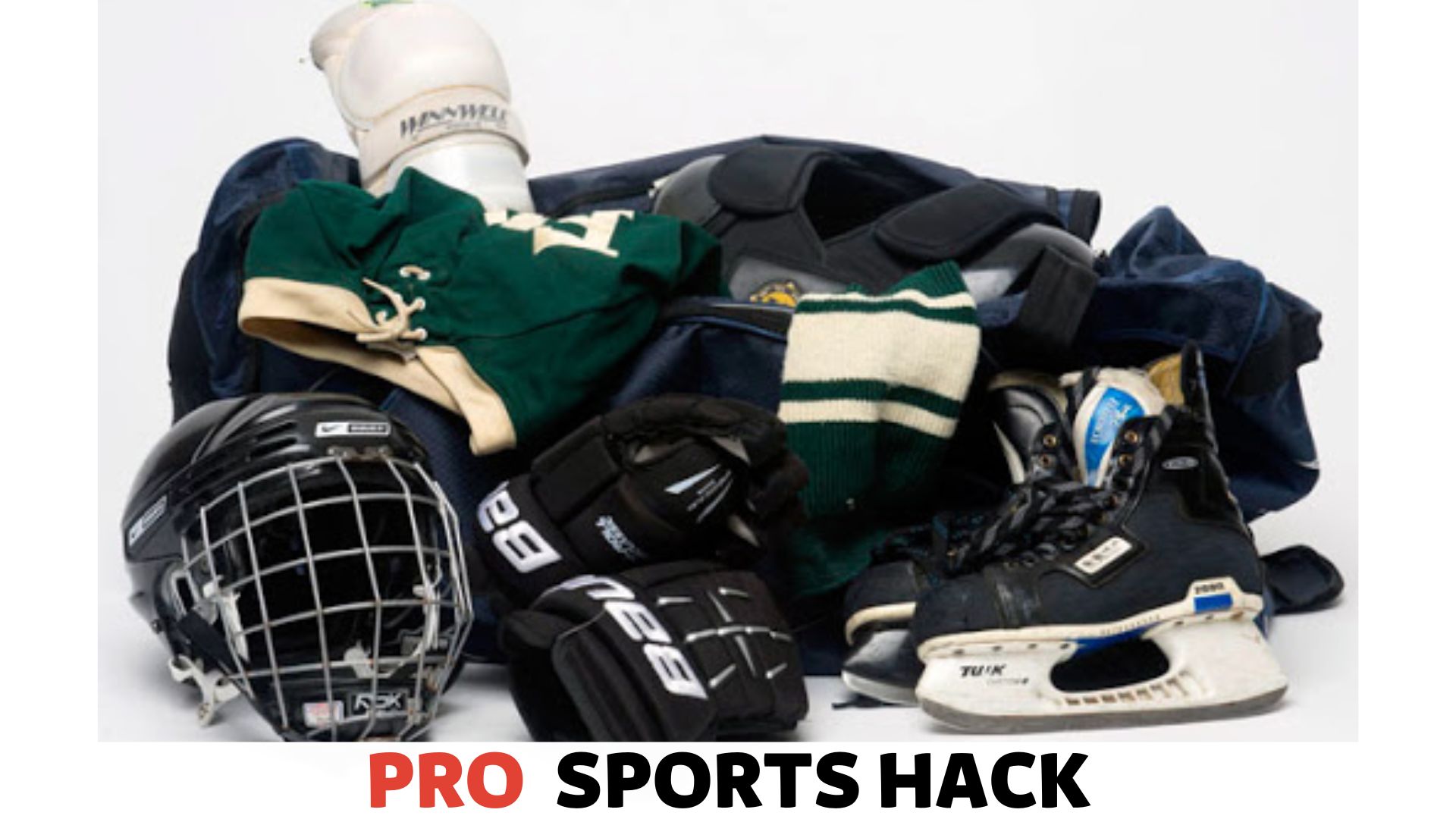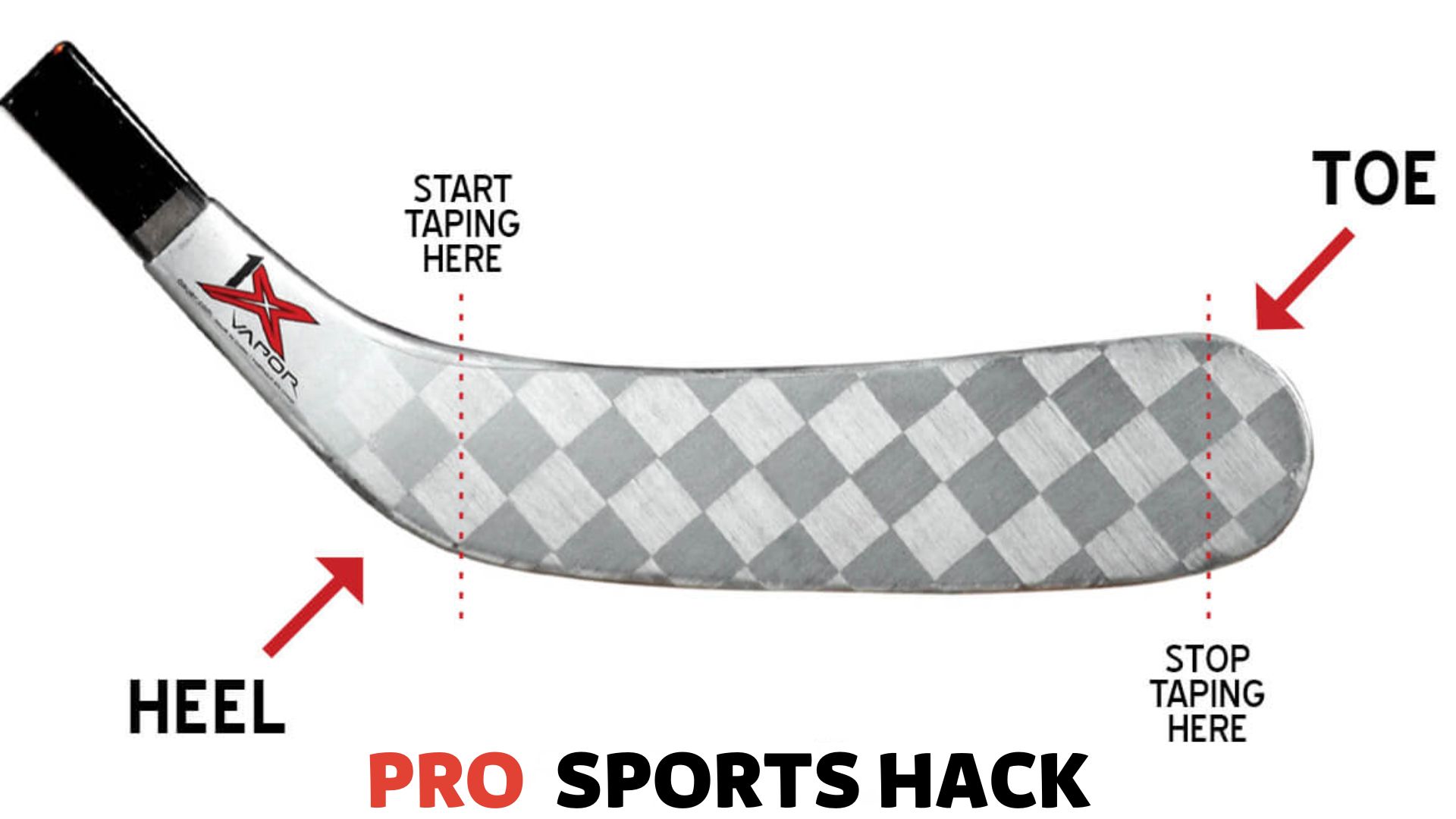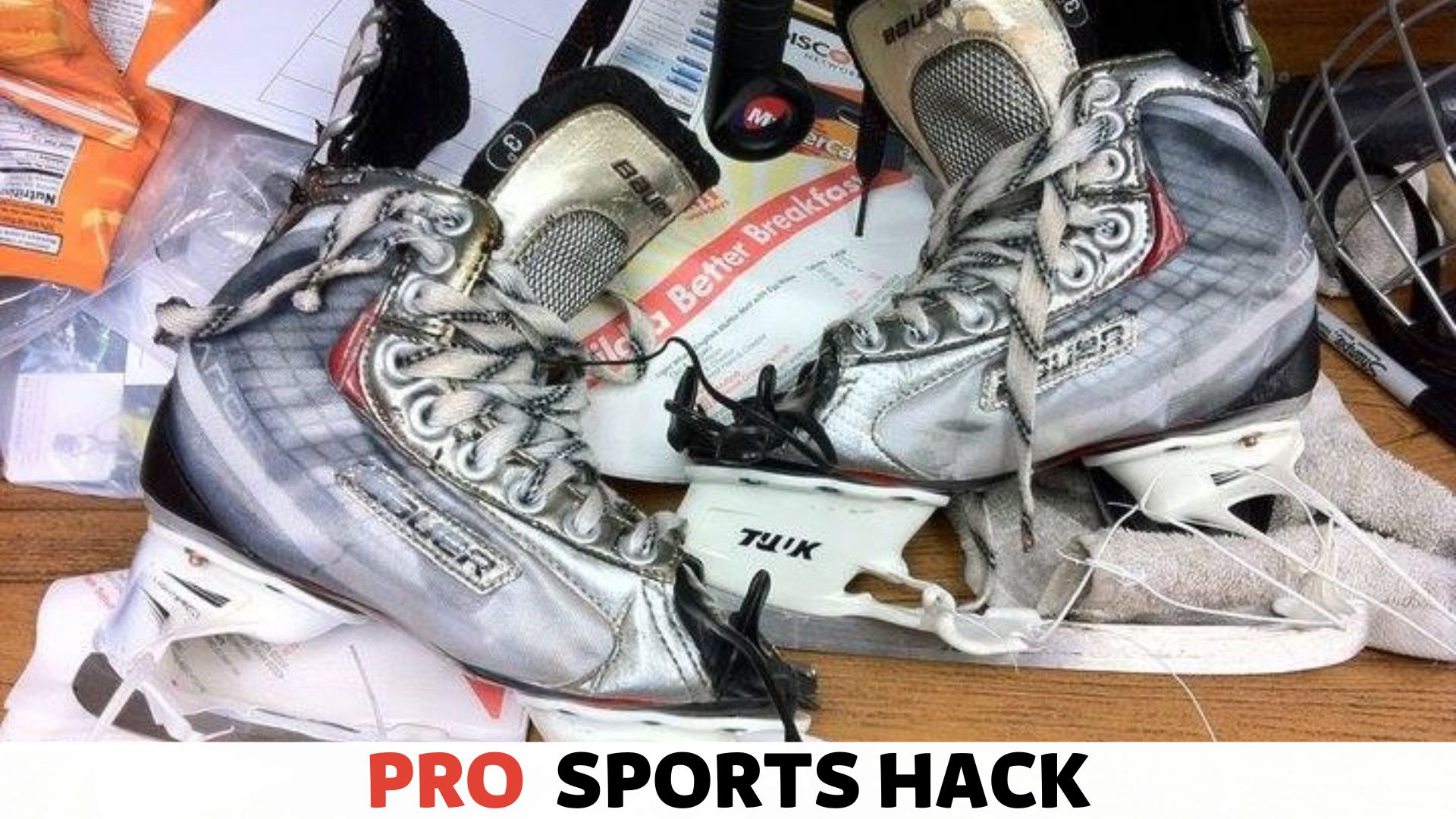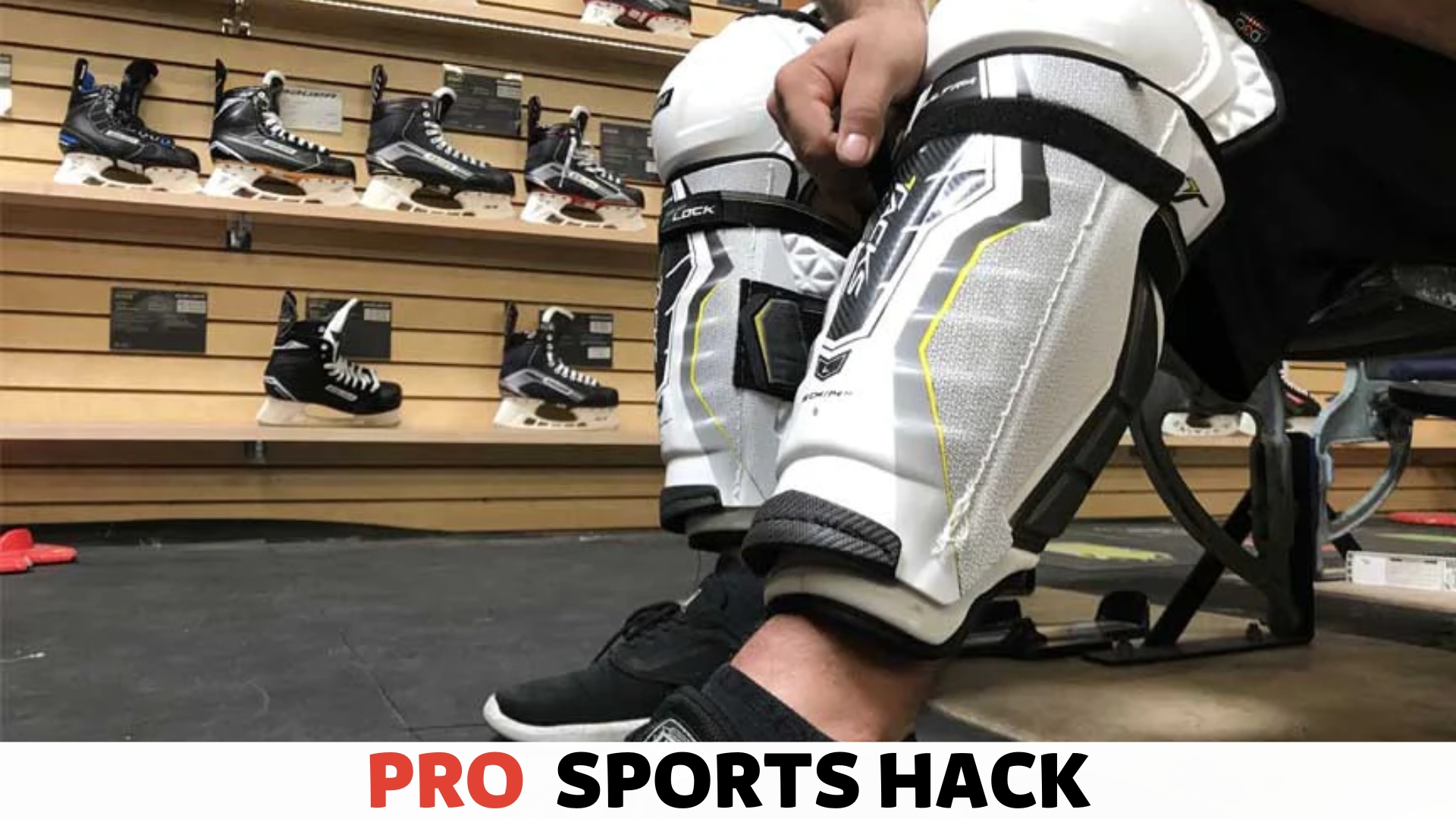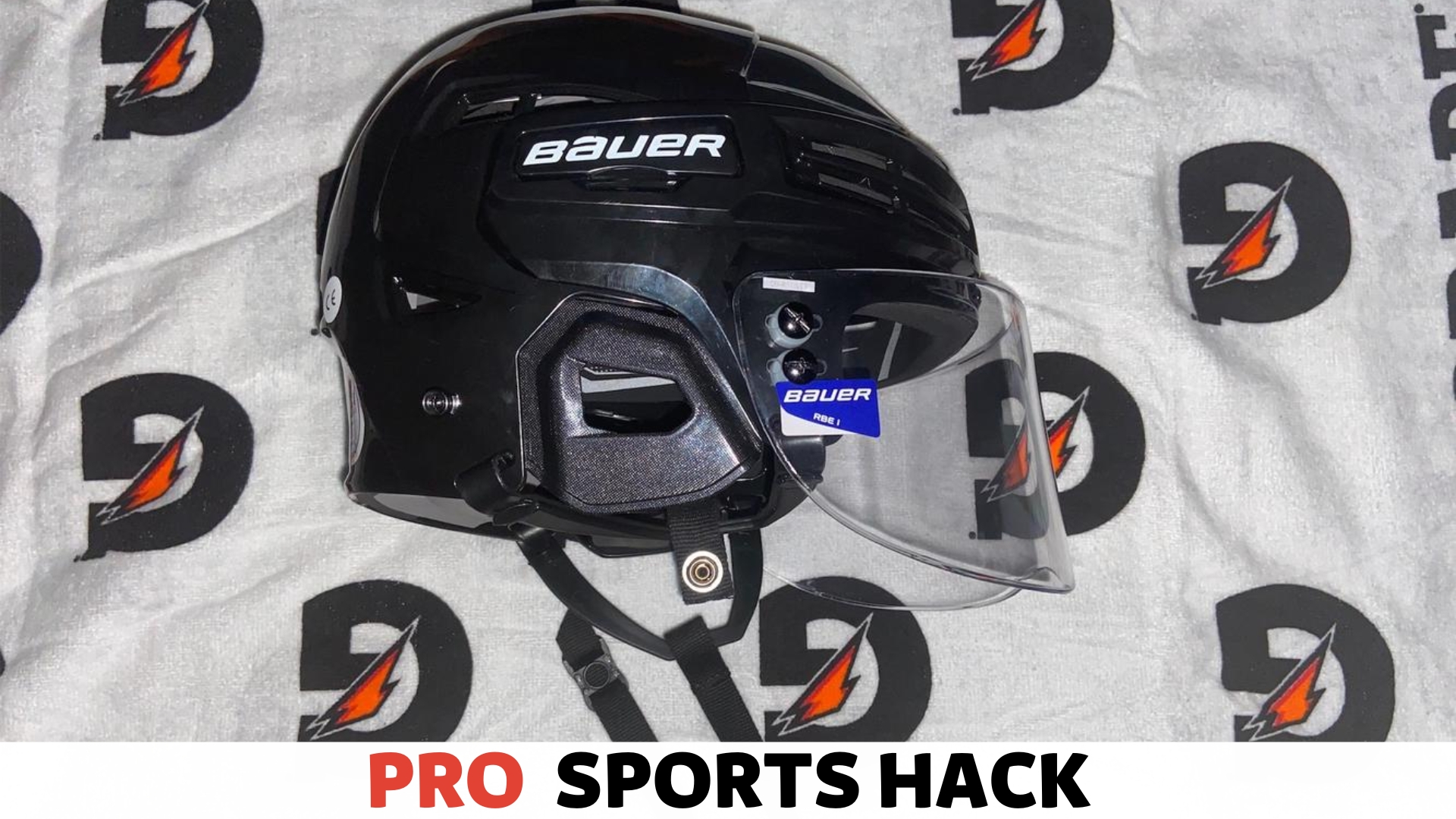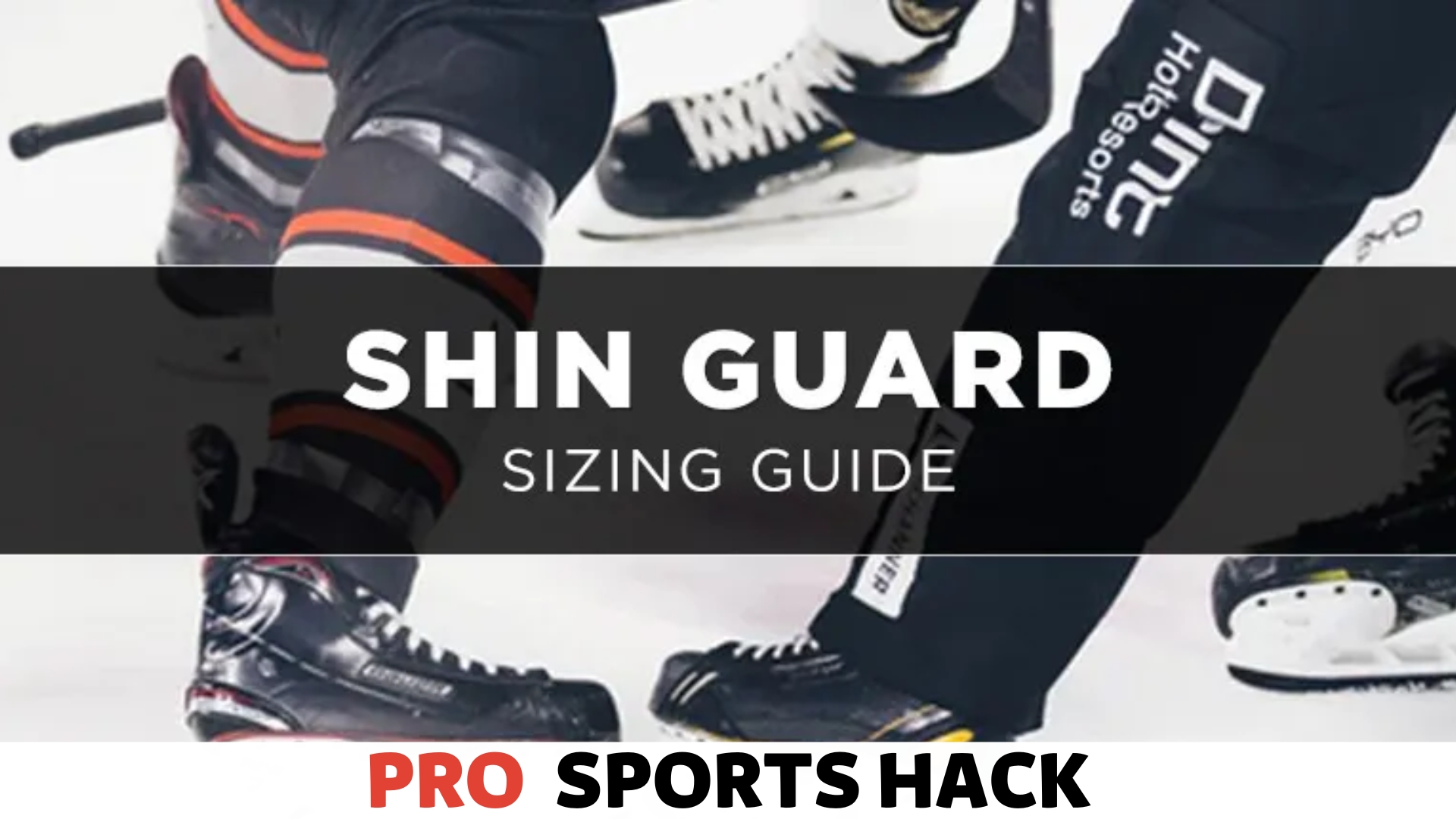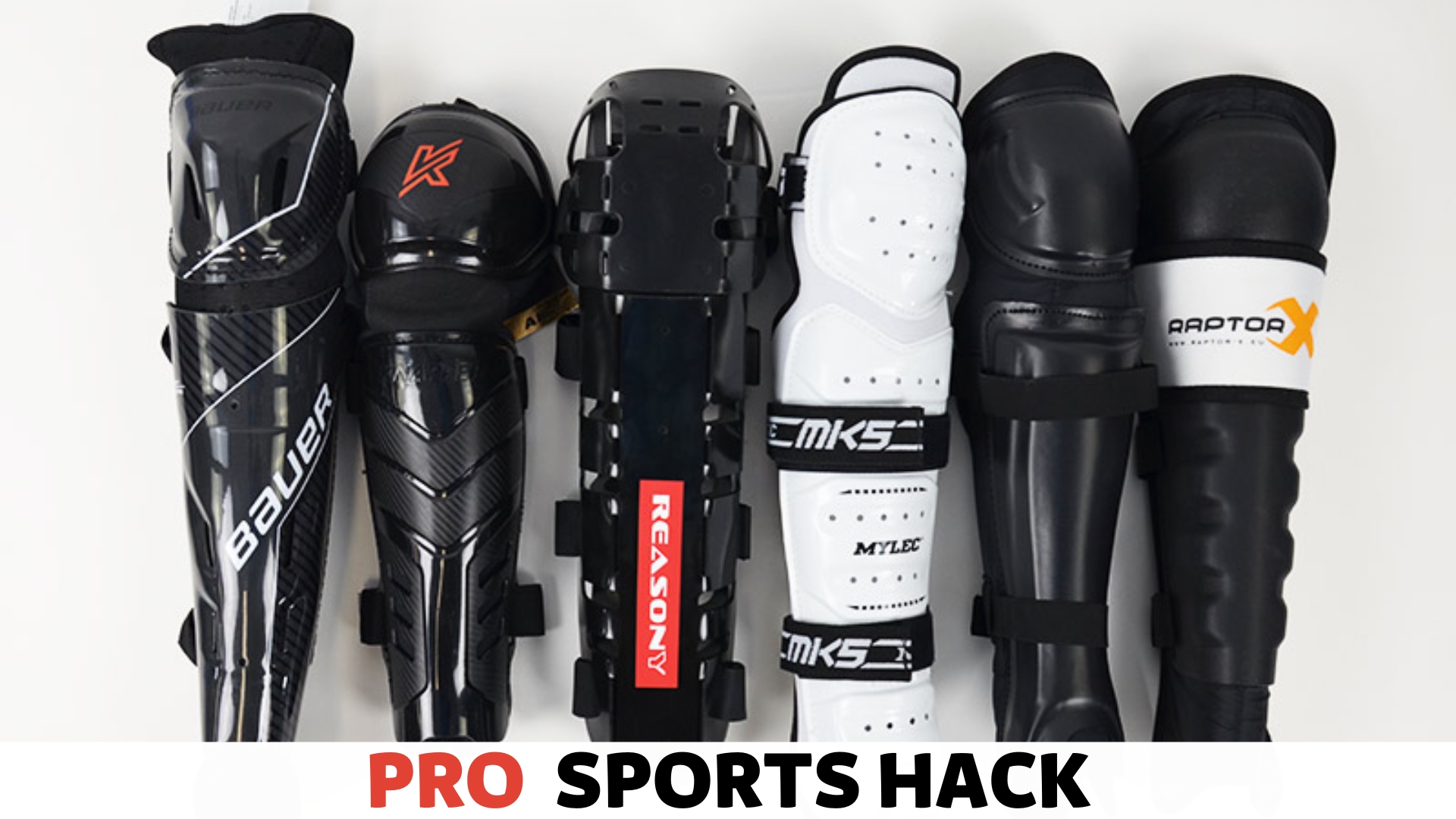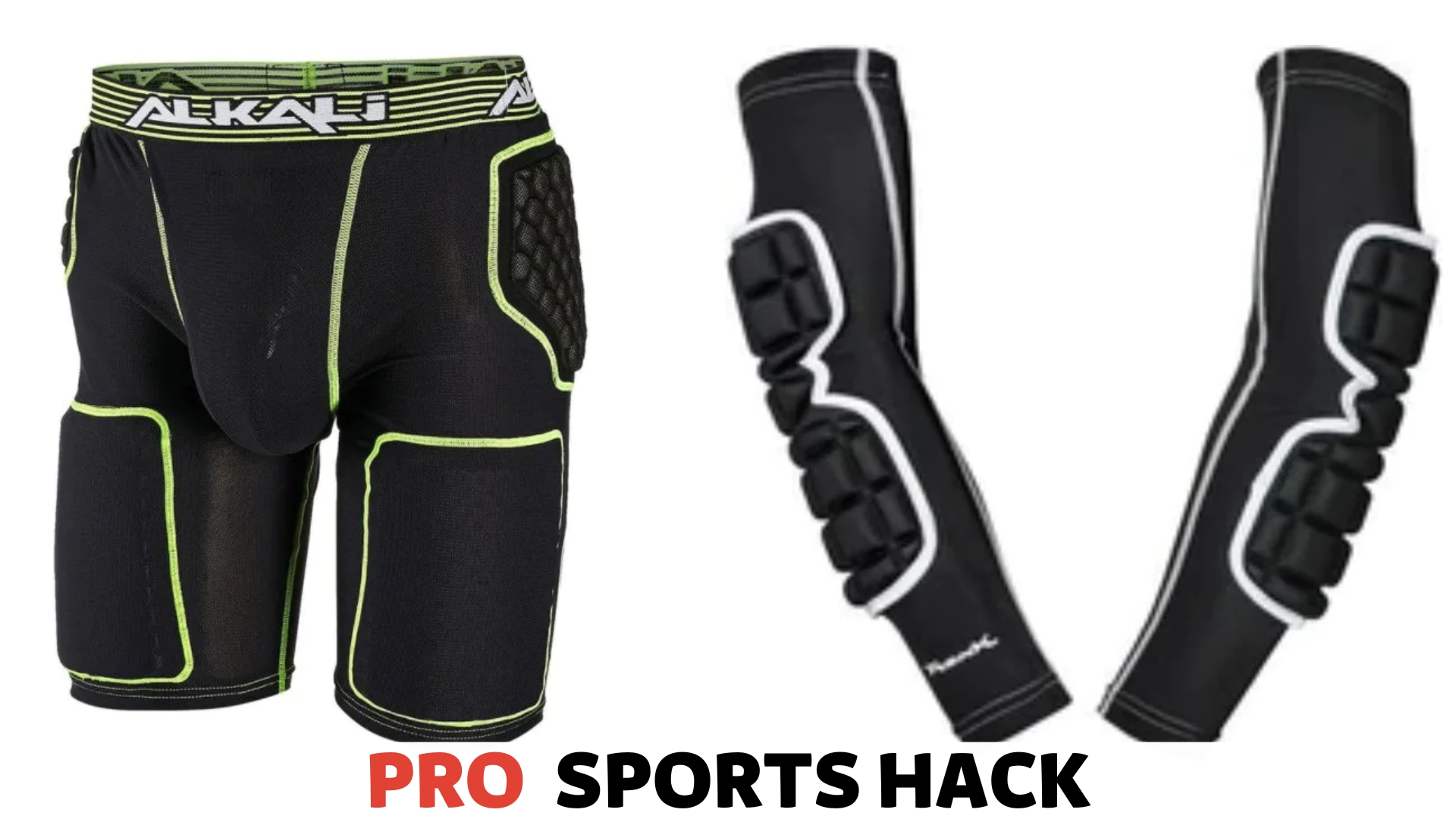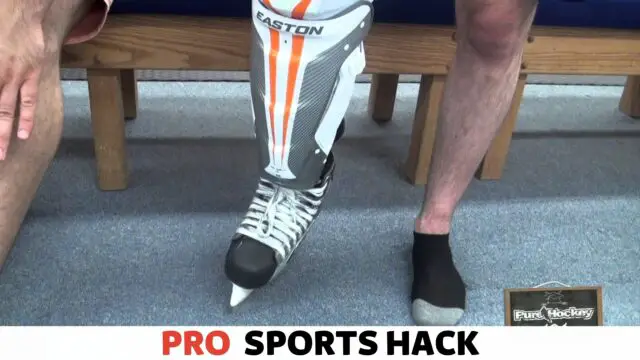
Hockey shin guards should fit snugly and extend from just below the knee cap to the top of the skate tongue, providing full leg coverage without restricting movement. Introducing the importance of properly fitting hockey shin guards is crucial for players’ safety and performance.
Shin guards serve as a protective barrier, shielding the lower legs from puck impacts, slashes, and falls. However, it is essential to ensure a precise fit to maximize comfort and mobility.
A well-fitting shin guard should extend from just below the knee cap to the top of the skate tongue, effectively covering the entirety of the lower leg.
This allows players to move freely on the ice while safeguarding against potential injuries.
We will explore the key considerations when fitting hockey shin guards, providing valuable insights for players of all levels.
Importance of Proper Fitting
When it comes to hockey shin guards, proper fitting is of utmost importance for both safety and performance on the ice.
Ensuring your shin guards fit correctly can protect your lower legs from injuries, enhance mobility and comfort, and optimize your overall performance and confidence.
Let’s take a closer look at why having the right fit is crucial.
Protecting the Lower Legs from Injuries
One of the primary reasons for wearing shin guards is to protect the lower legs from injuries. Hockey is a fast-paced, physical sport, and the risk of getting hit by a stray puck or a stick is always present.
A well-fitted shin guard acts as a sturdy barrier, absorbing and dispersing impacts and minimizing the risk of fractures, bruises, or other severe injuries.
Enhancing Mobility and Comfort on the Ice
Properly fitting shin guards are designed to balance protection and mobility. If your shin guards are too large or small, they can hinder your movements on the ice, affecting your speed, agility, and overall performance.
Shin guards that are too big may restrict your range of motion, making it difficult to skate effectively, while shin guards that are too small may cause discomfort, chafing, and irritation during gameplay.
By ensuring a snug and secure fit, you can maintain mobility, allowing you to maneuver effortlessly and confidently on the ice. This freedom of movement enables you to execute quick turns, pivots, and sprints without hindrance, giving you a competitive edge over your opponents.
In our article on “Field Hockey Shin Guards Sizing: A Comprehensive Guide,” we delve into the nuances of choosing the right size for your shin guards, ensuring optimal comfort and protection on the field.
Optimizing Performance and Confidence
The right fit of shin guards not only protects your legs and enhances mobility but also significantly optimizes your overall performance and confidence on the ice.
When your shin guards fit properly, you can focus on playing your best game without any distractions or discomfort. This can boost your confidence and mental focus, enabling you to perform at your peak.
Moreover, a well-fitted shin guard allows you to have better control over your movements, improving your overall agility and coordination.
With adequate protection, you can fully commit to the game’s tackles, blocks, and other physical aspects, knowing that your lower legs are safeguarded.
The importance of proper fitting cannot be overstated regarding hockey shin guards. By protecting your lower legs from injuries, enhancing your mobility and comfort, and optimizing your performance and confidence, a well-fitted shin guard is a vital piece of equipment that every hockey player should invest in.
Determining the Correct Size
Measuring the Length of the Shins
One of the essential steps in determining the correct size of hockey shin guards is measuring the length of the shins. This measurement is crucial as it ensures optimal protection while allowing for comfortable movement on the ice.
To measure the shins, follow these simple steps:
- Start by sitting down and bending your knee to a 90-degree angle.
- Ask a friend or family member to assist you with the measurement.
- Using a flexible measuring tape, place one end just below the kneecap and extend it to the top of your skates.
- Take note of the measurement in inches or centimeters.
By accurately measuring the length of your shins, you will have a solid foundation for finding the right shin guard size.
Considering the Player’s Height and Weight
Another important factor to consider when determining the correct size of hockey shin guards is the player’s height and weight. While the measurement of the shins serves as a base, considering these additional factors helps ensure the ideal fit.
Taller and heavier players often require larger shin guards for adequate coverage and protection. Conversely, shorter and lighter players may find smaller shin guards more comfortable and less restrictive.
It’s crucial to strike a balance between protection and mobility. Skilled players who value speed and agility may opt for lighter and more streamlined shin guards, whereas players who prioritize physical play may prefer heavier and more robust options.
Trying on Different Sizes and Brands
Once you have measured the length of your shins and considered your height and weight, the next step in finding the correct size of hockey shin guards is trying on different sizes and brands.
Each manufacturer may have slightly different sizing standards, so it’s essential to test various options before deciding.
Here’s how you can go about it:
- Visit a sporting goods store or hockey equipment retailer.
- Talk to a knowledgeable salesperson who can guide you through the available options.
- Try on different sizes and models to assess the comfort and fit.
- Pay attention to how the shin guards securely cover your shins and calf muscles without impeding your movement.
- Ensure the shin guards remain in place during various skating and playing movements.
Remember, finding the perfect fit may require trying on several sizes and brands, as each player’s preferences and body shape can vary. Taking the time to test and compare different options will ensure you choose the right shin guards.
Discover the art of selecting the perfect shin guards with “The Ultimate Hockey Shin Pads Size Guide: Finding Your Perfect Fit.” This comprehensive guide covers everything from measurement techniques to the importance of a snug fit in enhancing your hockey performance.
Proper Placement of Shin Guards
One of the most important aspects of wearing hockey shin guards is ensuring they are properly placed on your legs. Proper placement not only ensures maximum protection but also allows for optimal movement and comfort on the ice.
In this section, we will discuss three key factors to consider when properly placing shin guards: ensuring full coverage of the shins, positioning the knee cap in the center, and securing the straps correctly.
Ensuring Full Coverage of the Shins
To ensure the highest level of protection, your shin guards must cover your shins completely. When you are on the ice, your shins are vulnerable to impacts from pucks, sticks, and other players, so it is essential to have adequate coverage.
To achieve this, ensure the shin guards extend from just below the knee cap to just above the ankle. This will provide full coverage for both the front and sides of your shins, minimizing the risk of injury.
Positioning the Knee Cap in the Center
An often overlooked aspect of proper shin guard placement is positioning the knee cap in the center of the knee cup. This ensures that the knee cap is fully protected and allows optimal mobility.
When putting on your shin guards, ensure the knee cup is centered directly over your knee cap. This will provide a secure fit and prevent any potential shifting during gameplay.
Securing the Straps Correctly
Properly securing the straps of your shin guards is vital for both comfort and effectiveness. Too loose, the shin guards may move and shift during play, compromising their protective capabilities.
Too tight, and you may restrict blood flow and hinder your performance. To find the right balance, fasten the straps snugly but not too tight above your calf muscles.
This will keep the shin guards in place while allowing for proper circulation and freedom of movement.
Properly placing your hockey shin guards ensures optimal ice protection, mobility, and comfort.
By following these guidelines and ensuring full coverage of the shins, positioning the knee cap in the center, and securing the straps correctly, you can enhance your performance and reduce the risk of shin injuries while playing hockey.
Choosing the Right Style
When it comes to hockey shin guards, finding the right style is crucial for both comfort and protection. Different players have different preferences, so it’s important to understand the various styles of shin guards available in the market.
In this section, we will discuss three popular styles: traditional two-piece shin guards, integrated shin guards with a sleeve, and molded or anatomical shin guards.
By understanding the features and benefits of each style, you can make an informed decision about which one suits you best.
Traditional Two-piece Shin Guards
The traditional two-piece shin guards consist of two separate pieces: a shin guard and a knee guard. These are connected using adjustable straps or Velcro closures.
These shin guards are popular among players who prefer a customizable fit. The separate knee guard provides additional protection, making it a popular choice for defensemen and players who engage in physical play.
The adjustable straps or closures allow you to fine-tune the fit to your liking. These shin guards are versatile and can be worn by players of all ages and skill levels.
Integrated Shin Guards With a Sleeve
Integrated shin guards with a sleeve have gained popularity in recent years. These shin guards have a built-in sleeve that securely holds the guard. Unlike the traditional two-piece design, there are no adjustable straps or closures.
This style is more streamlined and provides a snug fit. Integrated shin guards are known for their lightweight design, allowing players to move freely without sacrificing protection.
Additionally, the sleeve is often moisture-wicking, reducing the chances of sweaty and uncomfortable shin guards.
Molded or Anatomical Shin Guards
Molded or anatomical shin guards are designed to match the contours of your leg. These shin guards are pre-shaped to fit your shin and offer a close and comfortable fit.
The molded design ensures maximum coverage and protection as the guard wraps around your leg seamlessly. These shin guards are popular among professional players and those looking for top-of-the-line protection.
They often come with additional features such as built-in ankle protection and extra padding in high-impact areas.
When choosing the right style of hockey shin guards, consider your preferences, playing style, and level of play.
Traditional two-piece shin guards offer a customizable fit and added knee protection, while integrated shin guards provide a streamlined and snug fit without the hassle of straps.
For maximum comfort and protection, molded or anatomical shin guards are the go-to choice.
By understanding the different styles available, you can select the shin guards that best suit your needs and enhance your performance on the ice.
Evaluating the Fit
Checking for a Secure and Snug Fit
When it comes to hockey shin guards, having a secure and snug fit is crucial. These protective gears shield your shins and knees from potential injuries during intense gameplay.
So, how do you ensure that your shin guards provide the right level of protection? Let’s take a closer look.
First and foremost, it’s essential to check that the shin guards fit securely around your legs. This means ensuring that they are not too loose or too tight. When you put them on, they should feel comfortably snug, with the top of the shin guard resting just below your knee cap.
This ensures that the vulnerable areas of your legs are adequately protected. If the shin guards are too loose, they may shift during gameplay, leaving your shins susceptible to injury.
On the other hand, if they are too tight, they may restrict your movement and cause discomfort.
Stand up straight and bend your knees slightly to check for a secure fit. This will allow you to evaluate how well the shin guards conform to the natural shape of your legs.
Pay attention to any areas that feel too loose or tight. Ideally, the shin guards should wrap around your legs without any gaps or excess material.
Adequate Protection for Vulnerable Areas
One of the primary purposes of hockey shin guards is to provide adequate protection for vulnerable areas such as the shins and knees. When evaluating your shin guards’ fit, ensure they cover these areas entirely, leaving no exposed skin.
The shin guard should extend from just below your knee cap to the top of your skate tongue, offering comprehensive coverage.
Additionally, pay close attention to the level of padding in the shin guards. Adequate padding is essential for absorbing impacts and reducing the risk of injuries. Press your fingers gently against the padding to ensure it feels dense enough to provide adequate protection.
Remember, the padding should be evenly distributed along the front of the shin guard, with extra padding in critical areas. This will allow you to block shots confidently, face opponents’ sticks, and engage in physical play without fear of harm.
While exploring the world of protective gear, have you ever wondered, “Can Football Gloves Be Washed?” Find out in our related post, where we share valuable insights on maintaining the hygiene and longevity of your football gloves with proper cleaning techniques.
Freedom of Movement for the Knee Joint
In addition to ensuring a secure fit and optimal protection, your shin guards must allow for freedom of movement for the knee joint. Hockey requires swift and agile movements, and restrictive shin guards can hinder your ability to skate and play at your best.
When evaluating the fit, check whether the shin guards allow your knees to bend naturally without restriction. Flex your knees and move through a few skating motions to ensure the shin guards don’t impede your range of motion.
This will allow you to maneuver swiftly on the ice, easily change directions, and perform powerful strides without feeling hindered by your protective gear.
Evaluating the fit of your hockey shin guards is crucial for ensuring maximum protection and optimal performance. Remember to prioritize a secure and snug fit, adequate protection for vulnerable areas, and freedom of movement for the knee joint.
By adhering to these guidelines, you can select shin guards that offer the perfect balance of comfort, protection, and mobility, allowing you to focus on the game and play your best.
Testing the Range of Motion
To ensure proper fit and maximum protection, it is crucial to test the range of motion when wearing hockey shin guards. This involves flexing and extending the knee, bending and squatting on the ice, and simulating skating movements.
By performing these tests, players can determine if their shin guards allow optimal mobility and comfort, ultimately enhancing their performance on the ice.
Flexing and Extending the Knee
One of the first tests is flexing and extending the knee while wearing the shin guards. This is an important movement that directly impacts a player’s skating stride.
When performing this test, players should pay attention to any restrictions in movement or discomfort caused by the shin guards.
The guards must provide enough flexibility to allow for a full range of motion without hindering the natural movement of the knee joint.
Bending and Squatting on the Ice
In addition to knee flexion and extension, players should test the shin guards’ fit by bending and squatting on the ice. This test replicates players’ movements during gameplay, such as retrieving the puck or blocking shots.
The shin guards should not restrict players from getting low to the ice or hinder their ability to crouch down in a proper defensive stance.
If the guards limit the player’s ability to bend and squat comfortably, it can greatly impact their agility and overall performance on the ice.
Simulating Skating Movements
Finally, players should simulate skating movements to truly evaluate the fit of their shin guards. This includes movements such as striding, turning, and stopping.
During these simulations, players should ensure the shin guards do not slide or shift out of place. They should also be mindful of any discomfort or irritation caused by the guards.
A secure and comfortable fit is crucial for players to focus on the game without any distractions or worries about their equipment.
Testing the range of motion is vital in determining the proper fit of hockey shin guards.
Players can ensure that their shin guards allow optimal mobility and comfort by flexing and extending the knee, bending and squatting on the ice, and simulating skating movements.
This enhances their performance on the ice and reduces the risk of injury. So, take the time to properly test your shin guards to maximize your agility and protect yourself during intense gameplay.
Addressing Fit Issues
Resolving Discomfort or Pain
One common fit issue that hockey players often face with their shin guards is discomfort or pain. It’s important to address this issue promptly, as playing with ill-fitting shin guards can affect your performance and lead to injuries.
If you experience discomfort or pain while wearing your shin guards, here are a few steps you can take to resolve the issue:
- Check the sizing: Ensure your shin guards are the correct size for your legs. Shin guards that are too small can dig into your skin, causing discomfort, while those that are too big may shift around during play, leading to inefficient protection.
- Adjust the straps: Look at the straps on your shin guards and ensure they are snug but not too tight. Tightening them appropriately can help alleviate any pressure points that may be causing discomfort.
- Add padding or cushioning: If you find that certain areas of your shin guards are causing discomfort, consider adding extra padding or cushioning. This can help distribute the impact more evenly and reduce pressure on specific spots.
- Try different sock configurations: Experiment with different sock thicknesses or layering techniques to create additional padding between your skin and the shin guards. This can help reduce friction and alleviate any discomfort caused by direct contact.
By taking these steps, you can significantly improve the fit and comfort of your shin guards, allowing you to focus on your game without any distractions.
Dealing With Restricted Mobility
Another fit issue that hockey players may encounter is restricted mobility. If your shin guards limit your range of motion, it can affect your agility on the ice. Here are a few suggestions to address this problem:
- Ensure proper positioning: Ensure your shin guards are properly positioned on your legs. They should cover the front of your shins from just below the knee to the top of your skates without impeding your knee movement.
- Consider different styles: Some shin guard models are specifically designed to allow for enhanced mobility. Look for segmented or articulated construction options that provide flexibility without compromising protection.
- Try different sizes: If your current shin guards restrict your movement, it may be worth trying a different size. Sometimes, a slightly smaller or larger size can significantly affect how well they accommodate your leg’s shape and movement.
By addressing these fit concerns, you can ensure that your shin guards provide optimal protection while allowing you the freedom to skate and maneuver comfortably on the ice.
Exploring Alternative Models or Sizes
If you’ve exhausted all the options and are still experiencing fit issues with your shin guards, it might be time to consider exploring alternative models or sizes.
Hockey equipment brands offer various shin guard options for different leg shapes and sizes. By trying out different models or sizes, you may find one that offers a better fit for you.
To help you make an informed decision, consider the following factors:
| Factors to consider when exploring alternative shin guards |
|---|
| Padding and protection level |
| Strap adjustability and comfort |
| Material quality and durability |
| Weight and bulkiness |
By paying attention to these aspects, you can select shin guards that fit well and meet your specific needs as a player.
Remember, addressing fit issues with your shin guards is essential for both your comfort and safety on the ice. Finding the perfect fit will allow you to focus on your game and play to your full potential.
So, don’t underestimate the importance of properly fitting shin guards – they are a vital part of your hockey equipment that can significantly impact your overall performance.
Maintaining Proper Fit
Regularly Checking for Adjustments
Regularly checking for adjustments is essential to maintaining proper fit for your hockey shin guards. Over time, the straps and buckles of your shin guards may loosen or wear out, compromising their ability to provide adequate protection.
To ensure a secure fit, it is important to inspect and adjust your shin guards before each game or practice session.
Start by putting on your shin guards and fastening the straps securely. Stand up and check if the guards are properly aligned with your shins.
They should cover the entire length of your shin bone, from just below the knee to the top of your foot. If they feel loose or shift when you move, take the time to adjust the straps accordingly.
If your shin guards have adjustable buckles, ensure they are snug but not overly tight. Adjusting the buckles too tight can restrict blood flow to your lower legs and cause discomfort during play. Conversely, if the buckles are too loose, the guards may not stay in place and may jeopardize your safety.
Replacing Worn-out or Damaged Shin Guards
Replacing worn-out or damaged shin guards is crucial to maintaining optimal fit and protection. Like all sports equipment, shin guards can suffer wear and tear over time.
The padding may become compressed, losing its ability to absorb impact effectively, while the straps may become frayed or torn.
Inspect your shin guards regularly for any signs of damage. Check for any tears, loose stitching, or missing padding. If you notice any of these issues, replacing your shin guards immediately is crucial.
Continuing to use damaged shin guards can put you at risk of injuries and compromise your safety on the hockey rink.
Consulting With Professionals If Needed
Consulting with professionals, if needed, can provide valuable guidance in maintaining the proper fit of your hockey shin guards. If you are unsure about your shin guards’ correct sizing or fitting, consider seeking advice from a professional hockey gear specialist or a knowledgeable coach.
These professionals have expertise in selecting the right equipment and can offer recommendations tailored to your needs. They can accurately assess your leg and foot dimensions, ensuring you choose shin guards that provide an optimum fit and protection.
Additionally, they can provide valuable insights into properly wearing and adjusting your shin guards for maximum comfort and safety.
Remember, maintaining proper fit for your hockey shin guards is essential for your safety and performance on the ice.
Regularly checking for adjustments, replacing worn-out or damaged shin guards, and consulting with professionals if needed are all crucial steps to ensure that your shin guards provide the necessary protection for your legs.
Frequently Asked Questions
How Should Hockey Shins Fit?
Hockey shins should fit snugly without being too tight. They should cover the entire shin and knee area, with the kneecap centered in the padded portion. Ensure proper fit by trying them on with hockey socks and skates, and adjust straps for a secure fit.
How Do I Know If My Hockey Shin Pads Are Too Big?
To determine if your hockey shin pads are too big, check if they extend too far above your knee or if they are loose and slide around during play. Proper fitting shin pads should cover your knee and stay in place without restricting movement.
Where Should Your Hockey Shin Pads Go Down To?
Hockey shin pads should cover the entire shin from the knee to the top of the skate. They should fit snugly and provide proper protection without restricting movement. Make sure to choose the right size for a comfortable and safe fit during play.
How Do You Know What Size Shin Guards To Get?
To determine the appropriate size of shin guards, follow these steps:
- Measure the distance from your ankle to just below your knee.
- Use the sizing chart provided by the manufacturer to match your measurement with the corresponding size.
- Consider your playing position and preference for a snug or loose fit.
- Try on different sizes to ensure proper coverage and comfort.
- Consult the manufacturer’s recommendations or seek guidance from a sports equipment professional if unsure.
How Tight Should Hockey Shin Guards Be?
The hockey shin guards should be snug and secure, offering maximum protection without restricting movement.
Conclusion
To ensure proper protection and comfort on the ice, getting the right fit for your hockey shin guards is crucial. Finding the right size and making the necessary adjustments will enhance your performance and minimize the risk of injury.
Remember to check the length, coverage, and mobility when trying on shin guards. Revisiting these essential fitting guidelines will keep you in top form and ready for the game.
So, get the right fit, stay safe, and enjoy the thrill of playing hockey!




![Cat in the Chrysalis Spoiler: All You Need To Know [Updated] Cat in the Chrysalis Spoiler](https://prosportshack.com/wp-content/uploads/2024/02/Cat-in-the-Chrysalis-Spoiler-100x75.jpg)







